
Gravel is an inexpensive paving material overall, but costs vary by type. Find out what average gravel prices will look like for your project.
Mulch your way to healthier plants


Reclaimed wood or construction waste may contain contaminants.
Colored mulch steals nitrogen from soil as it attempts to break down.
Slower to break down than natural mulches.
Sure, colored mulches are pretty, but are they really safe? Can they contaminate the soil? The answer is, it depends. Some clean wood mulches that have natural dyes are safe. Others, where the wood is reclaimed and has been previously treated or has chemical dye applied, are not safe and can contaminate the soil and plants.
There are other issues with colored mulches too, including the way they strip soil of nitrogen and the length of time it takes dyed mulch to break down. Let's explore some of the big problems with colored mulches and what alternatives you might consider instead.
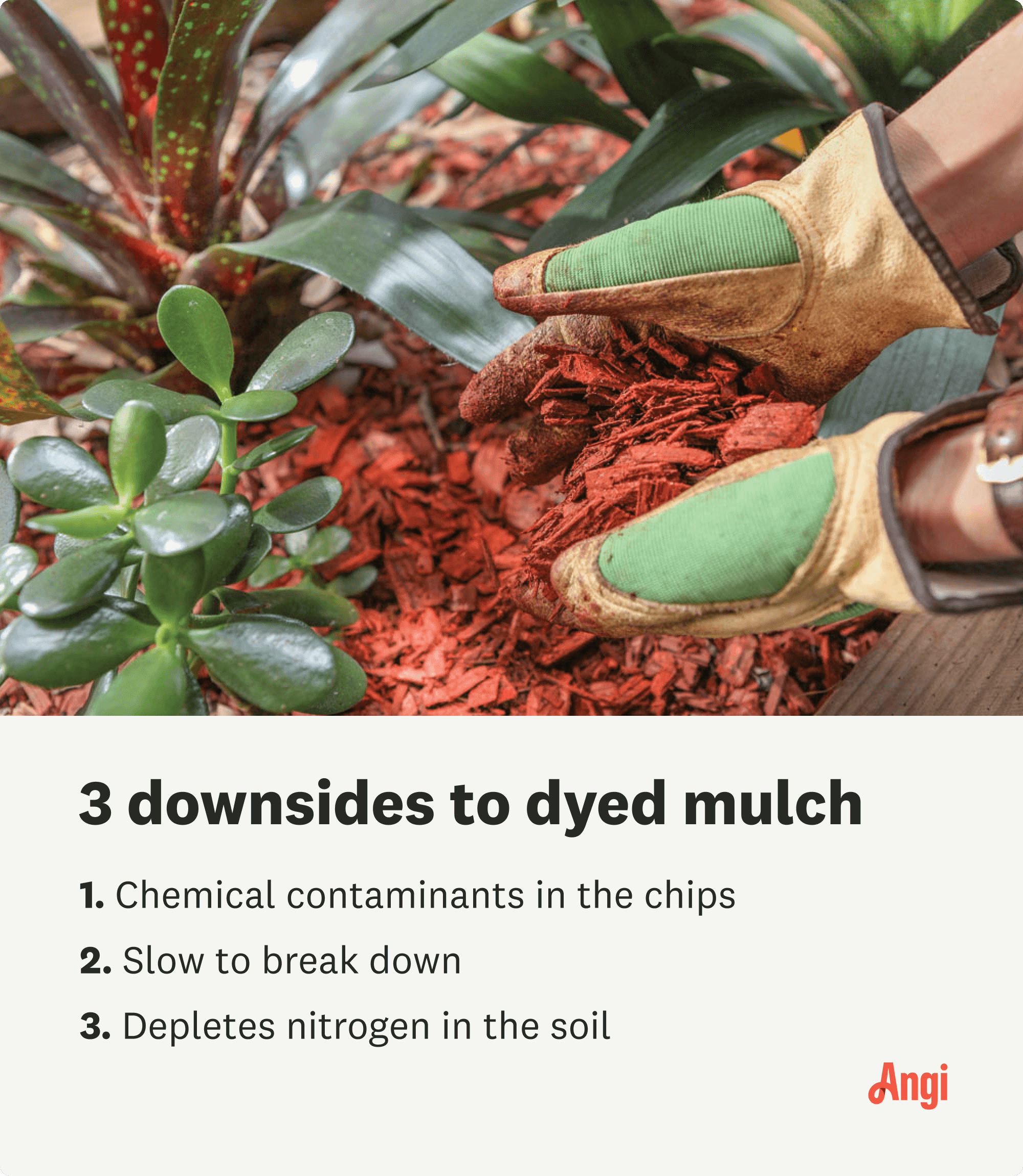
It all depends on the composition of the dye. High-quality mulches often use dyes containing natural ingredients such as iron oxide, carbon, or vegetable dyes. This type of dye is harmless in the garden, even if you're growing fruits and vegetables.
For example, manufacturers make red mulch using iron oxide, which is also used to make red-colored makeup. Carbon, on the other hand, is used to make black and brown mulch. Some manufacturers use vegetable dyes instead of iron oxide or carbon.
Some mulches also contain a heavily synthesized dye. By using these mulch types, you could contaminate your outdoor space. But if you have your heart set on colored mulch, it's crucial that you know the source of the dye so you’re aware of what you’re adding to your yard.
However, just because you've chosen a vegetable-based dye doesn't mean that the mulch is harmless. Often, the contaminants don't come from the dye. Instead, they come from the wood itself.
You want to buy garden mulch, dyed or otherwise, and you want to be a good citizen, so you decide to opt for recycled or reclaimed wood chips to help divert waste from landfills and reduce your carbon footprint. And that's great, in theory. The problem is that you likely don't know the source of the wood that you want to recycle.
Often, particularly for dyed mulch, companies use construction waste or demolition waste for the wood chips. And this wood has often been treated with an array of substances that are potentially harmful for soil, your family, and your pets.
Although banned for use in residential construction in 2003 by the US Environmental Protection Agency, CCA, or chromated copper arsenate, is one of the most common wood preservative compounds found in reclaimed and recycled wood chips.
Containing chromium, copper, and arsenic, CCA poses a significant health risk by contact or ingestion, and has the potential to pollute groundwater as well as soil.
There are other substances used to treat or preserve wood that are used in wood construction projects that have similar health and contamination concerns.
These include:
Creosote
Pentachlorophenol
Alkaline copper quaternary (ACQ)
Copper azole
Ammoniacal copper zinc arsenate
Copper citrate
Copper HDO
All of these chemicals, including CCA, and the plethora of other substances that can contaminate reclaimed wood are not just detrimental to the health of your pets and family if you handle them, they can also wreak havoc on your garden's ecosystem, killing beneficial bacteria, insects, and worms.
Plus, the contaminants can drastically alter the composition and quality of your soil. As you can see, trying to beautify your garden and reuse waste wood simultaneously can backfire.
If you do want to go this route, make sure you know the source of the wood so that you can reduce the risk of purchasing colored mulch with contaminants that could harm your soil, your plants, your pets, or your family.
To ensure the mulch you choose at least has no CCA or other significant chemical contaminants, opt for a mulch that has the Mulch and Soil Council (MSC) certification, as these products are lab and field tested to ensure no arsenic is present.

Another problem with colored mulch is that it takes longer to break down than natural, undyed mulches. Therefore, they consume far more nitrogen from the soil than natural alternatives. That's because wood requires nitrogen to break down, but, because the process takes much longer with colored mulch, it pulls more nitrogen from the soil.
Natural mulch breaks down comparatively rapidly and releases more nitrogen than it consumes back into the soil as it decomposes into rich organic matter.
While the slow decay of dyed mulch is considered by some to be a benefit, because it means you have to replace it less frequently, it does mean that you're not replenishing your soil with fresh, nitrogen- and nutrient-rich organic matter on a regular basis.
Therefore, unless you apply more fertilizer or compost, your soil health will suffer long-term, as will anything you grow in it.
Here are some dyed mulching tips to keep in mind:
Do:
Choose a mulch color that complements your home color and aesthetic.
Use red mulch for a bright pop of color.
Go with black mulch in cooler climates.
Opt for brown mulch if you’re unsure—it works in almost any yard.
Consider the plant and flower colors when choosing your dyed mulch.
Test your soil periodically.
Don’t:
Use the same or similar mulch color as your house.
Install black mulch in hotter areas because it will absorb heat and potentially harm your plants.
Choose a dyed mulch color that clashes with your plants and flowers.
Buy dyed mulch for your vegetable garden without verifying the wood source.
If you’re still unsure which mulch color to use after research and planning, talk to a landscaper near you. They can give tips on the right mulch to buy and help you install it safely.
If you aren’t sure what mulch is right for your lawn, alternatives to consider include pine needles, natural forest mulch, including cedar mulch, cypress mulch, or pine, and even dense layers of straw.
Just make sure you choose a reputable, sustainable source. You can even make your own mulch and recycle as much of your own yard waste as possible. These are all excellent options for mulching areas where you want to grow attractive, healthy plants or where you want to grow fruit and vegetables.
Katy Willis contributed to this article.
From average costs to expert advice, get all the answers you need to get your job done.

Gravel is an inexpensive paving material overall, but costs vary by type. Find out what average gravel prices will look like for your project.
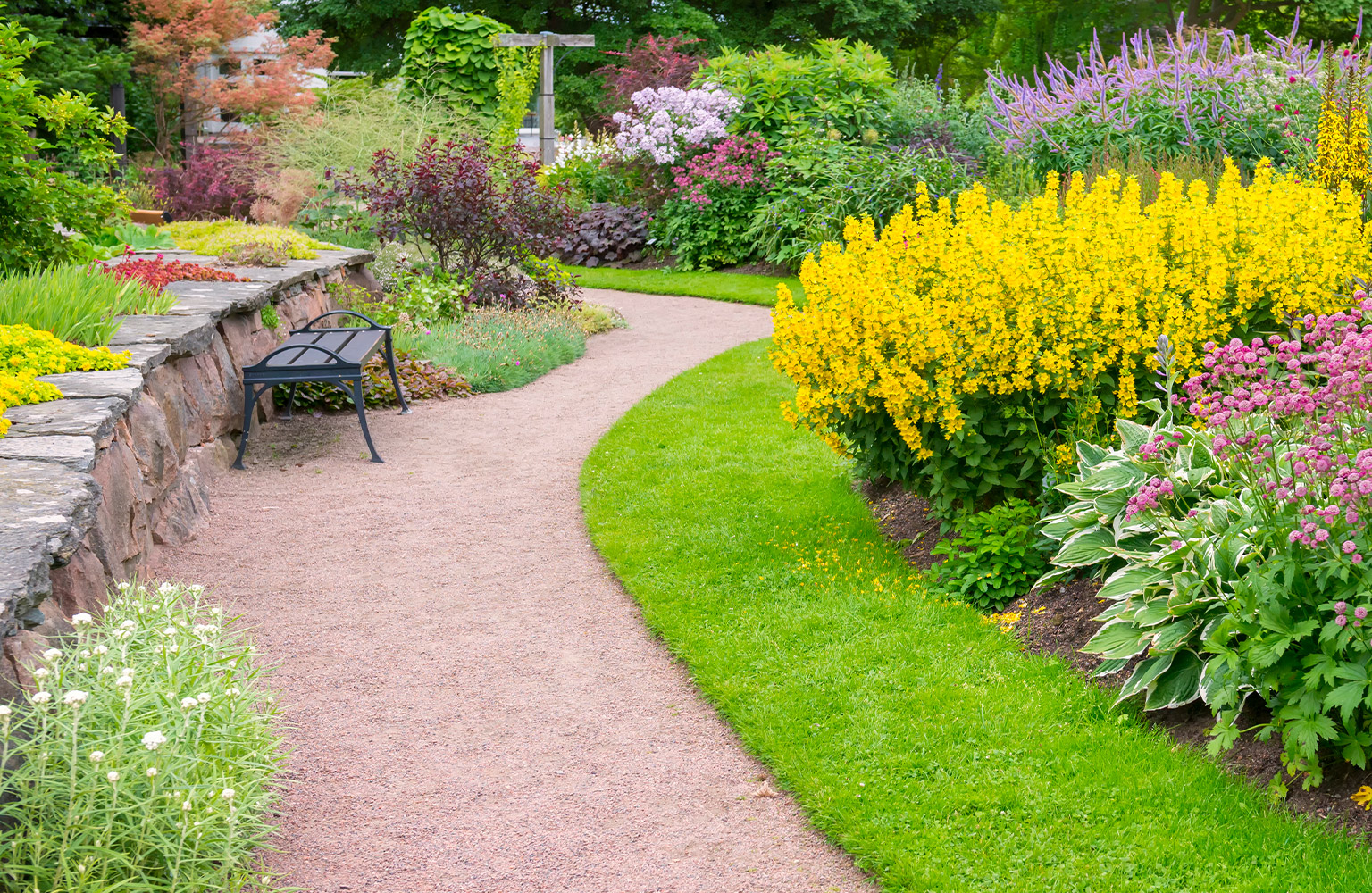
Discover the average sand delivery cost, key price factors, and tips to save on your next project. Get transparent, up-to-date estimates for sand delivery.
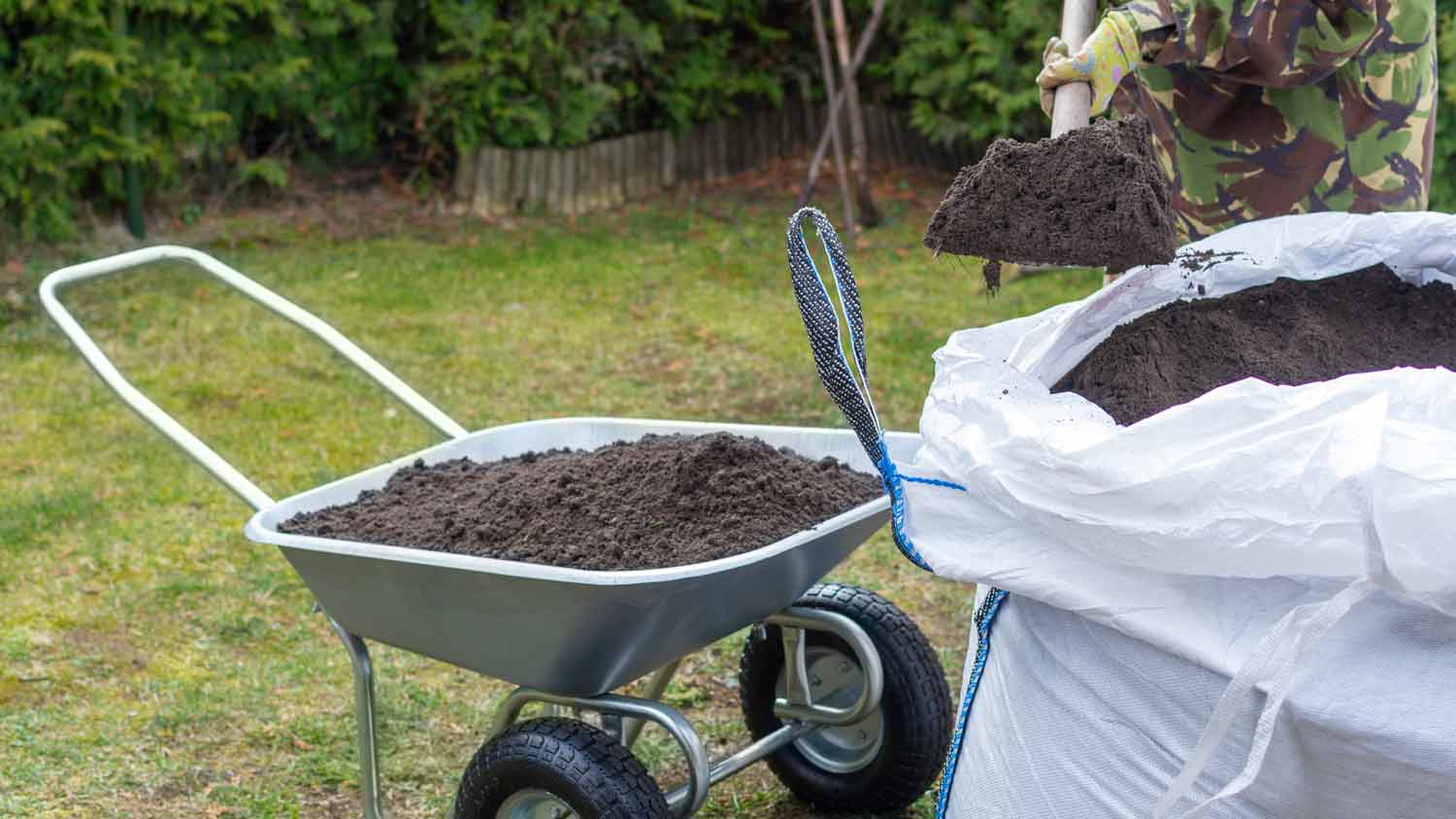
Get clear, up-to-date fill dirt cost info. Learn average prices, cost factors, and tips to save on your next fill dirt project.
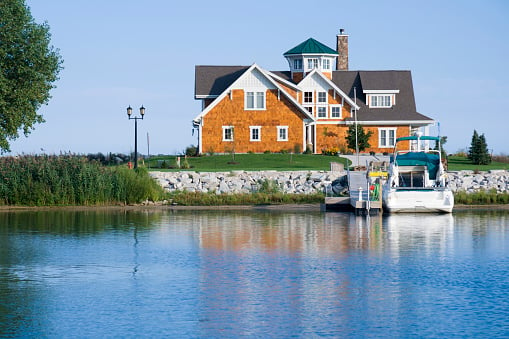
This rip rap calculator will help you estimate how much large rock you’ll need to ensure your shoreline or embankment doesn’t get wiped away by wayward waves.
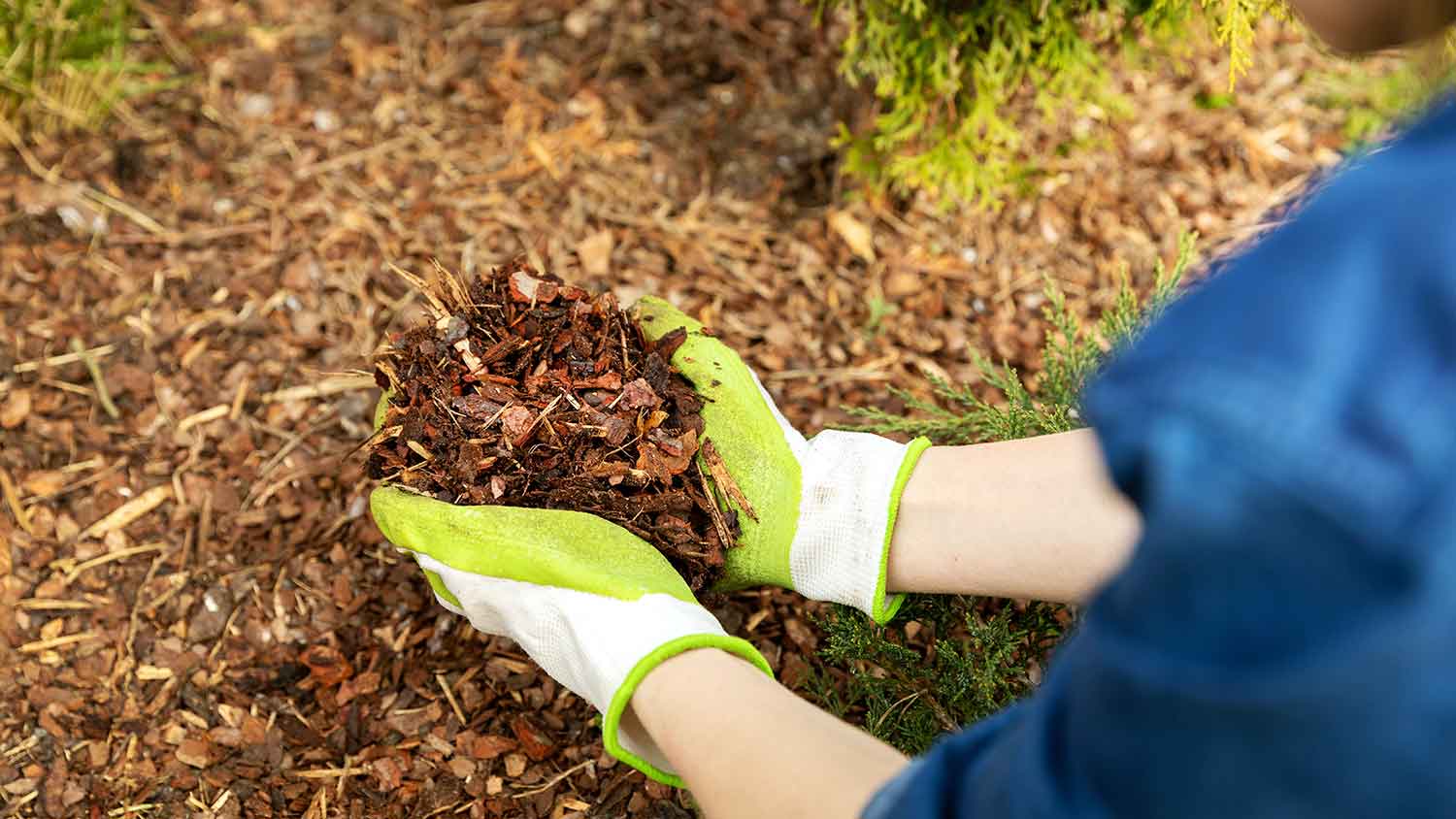
Discover mulch removal cost estimates. Discover what influences pricing, compare DIY vs. professional services, and find expert tips to save on your mulch removal project.

Tired of your traditional, woody mulch and ready to try something new? We got you! Get 11 mulch alternatives to choose from here.